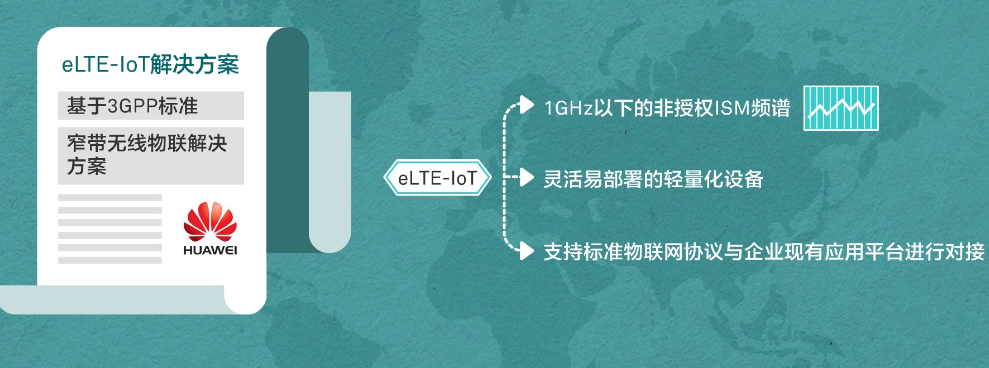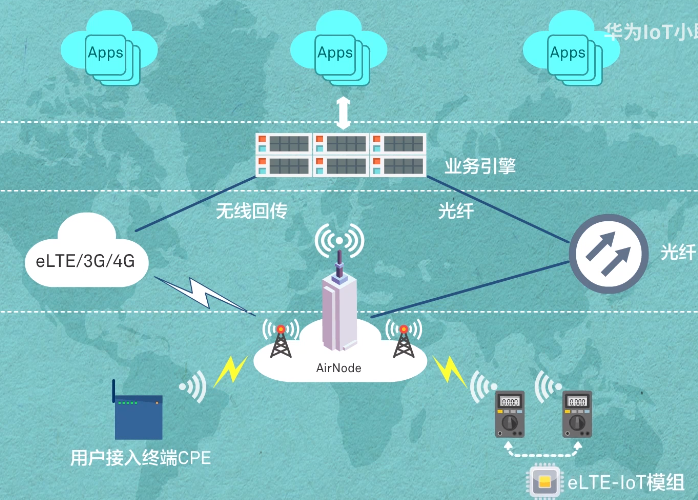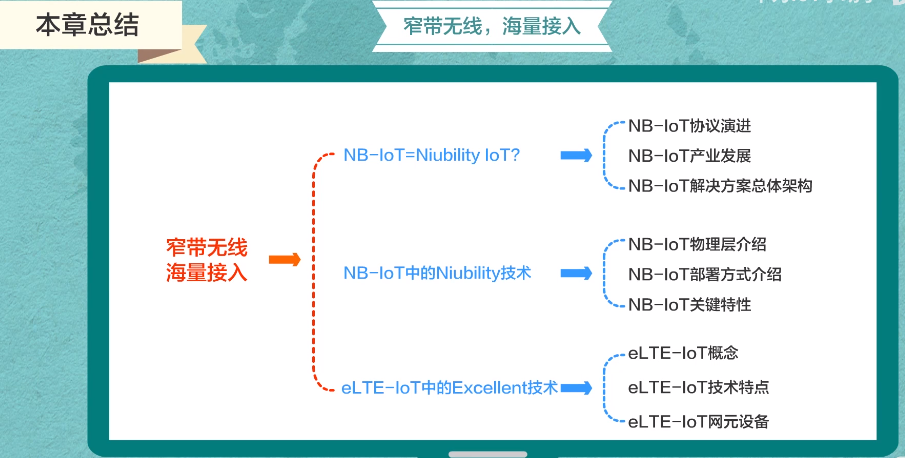The eLTE-IOT solution is a narrow-wide wireless IoT solution based on 3GPP standards developed by Huawei specifically for the industrial IoT market. eLTE-IOT is based on the unlicensed ISM spectrum below 1GHz and uses lightweight equipment that is flexible and easy to deploy. It also supports standard IoT protocols to connect with existing enterprise application platforms.

The target market of eLTE-IOT is the narrowband Internet of Things market built by enterprises. It can be applied in manufacturing, electric power, water affairs, smart cities and other industries.
List of eLTE-IOT industry applications:
(1) For the manufacturing industry, eLTE-IOT can provide a large number of low-power IoT solutions. Collect data from countless sensors on the production line. Whether it is the displacement of the robotic arm, the boring state, or even the temperature of the workshop, you can control it. Allow management to monitor and effectively manage production status.
(2) For the power industry
The main advantages of using eLTE-IOT to achieve remote meter reading are wide coverage, massive connections, easy deployment and expansion, and a coverage radius of 3-5km in a single cell. It effectively reduces the number of sites, thereby reducing network construction and maintenance costs, providing more powerful capacity than traditional networks, and supporting access to more than a thousand electricity meters. And the miniaturized equipment is easy to deploy.
Features of eLTE-IOT solution:
Reliable connection, massive IoT, lower power consumption, and wider coverage.
(1) Reliable connection
eLTE-IOT is based on the open ISM spectrum and can support three frequency bands: 470-510MHz in China, 902-928MHz in the Americas, and 863-870MHz in Europe. At the same time, eLTE-IOT uses frequency modulation technology to avoid external interference and improve reliability.
And it has a powerful sending and receiving mechanism to ensure reliable connection. So how does frequency hopping technology avoid external interference? Frequency hopping technology is that in each transmission opportunity window, the terminal selects a channel to send according to the pseudo-random frequency hopping mechanism within the communication range configured by the system, thereby achieving uplink frequency hopping. Through frequency hopping, uplink data is sent. The physical channel used at the time is constantly changing to avoid continuous interference.
(2) Massive Internet of Things
Let’s take a closer look at the characteristics of eLTE-IOT Massive IoT. eLTE-IOT Massive IoT is mainly implemented through small packet data fast transmission technology. In order to ensure the reliability of the business packets sent by the terminal during the wireless transmission process, corrections are generally performed. Wrong encoding, and retransmit the incorrect packet, or retransmit the entire packet.
As a result, the system does a lot of ineffective work and uses small packet transmission, that is, controlling the packet length sent by the wireless link within a smaller range. Generally, it is dozens of bytes, and then for each small packet, the base station quickly feedbacks whether it has been successfully received. If it fails, the terminal retransmits, otherwise it continues to send. The small packet fast transmission mechanism reduces the probability of interference during the data packet transmission process. At the same time, the reception result is quickly fed back, thereby improving the uplink transmission rate. The transmission time of the terminal is shortened, and the power consumption of the terminal is also reduced.
(3) Lower power consumption
The lower power consumption feature of eLTE-IOT, in addition to the small packet fast transmission technology just mentioned, which can reduce terminal power consumption, also introduces the energy-saving technology PSM mode and DRX mode used in NB-ioT. In addition, eLTE-IOT improves coverage by increasing the power spectrum density, with a maximum radius of up to 10Km. At the same time, eLTE-IOT also uses time domain retransmission technology to improve coverage. It can be said that eLTE-IOT is NB-IOT technology on the ISM spectrum. Adaptation enhancement.
(4) Wider coverage
NB-ioT is built on the cellular mobile network, while eLTE-IOT is built on the license-free ISM spectrum. So what is the network architecture of eLTE-IOT? Here we mainly explain the architecture of the eLTE-IOT network and the composition of its network element equipment. The eLTE-IOT network is an open and integrated architecture. It can be integrated upwards with third-party industry applications and platforms, and downwards eLTE-IOT modules can Integrate with third-party terminal equipment through the serial port to build an end-to-end ecosystem.

The network element equipment of eLTE-IOT includes service engine, ioT integrated base station AirNode, and user access terminal CPE. The service engine is the core convergence node of the eLTE-ioT network and mainly provides terminal equipment management, terminal AirNode access authentication, network Protocol processing, data forwarding, etc., and docking with third-party IoT applications or platforms.

AirNode is a lightweight designed base station that supports wall-mounted and pole-mounted installation, and supports wired transmission (optical fiber, network cable) to be directly connected to the service engine. It can also use external 3G and 4G wireless backhaul modules. Implement data return from the business engine. The eLTE-ioT network uses eSight network management to manage network element equipment such as service engines, base stations, and user access terminals. Realize equipment management, disaster recovery and backup.
Summary of this article:
